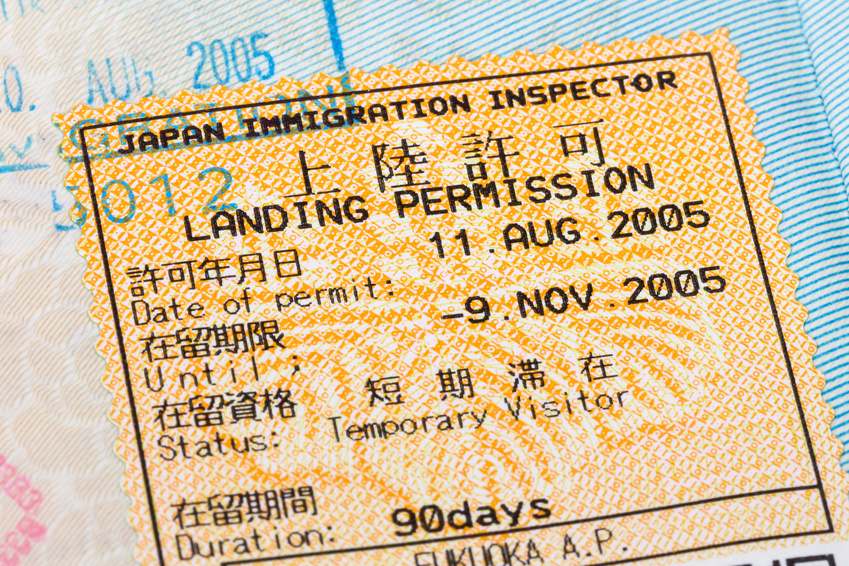
Before 2020 Tokyo Olympic Games, Japanese government have been the greatest effort ever to entice foreign tourists to visit Japan. Also the increase of the number of international students and workers contribute to the recent surge of foreign population in Japan. International airports across Japan fully operate with the increased number of major airlines and LCC aircrafts flying in and out all the time. You probably want to head to your destination as soon as possible after you arrive Japan. Well, you have to clear the customs and quarantine before you get out of the airport and this may be a little frightening moment for first timers in Japan. How long does it take to clear the immigration inspections to enter Japan?
Airport Customs and Immigration Inspection Process
After disembarking aircraft, you follow these steps.
- Quarantine: Follow the signs on the floor to proceed to the quarantine counter. Fill in a quarantine questionnaire card you received onboard (if any) and hand it to a quarantine officer. If you have any symptoms such as diarrhea, fever or other illness, report to the officer.
- Immigration: Present passport and other required documents at the immigration counter. An immigration officer takes your photo and collect your fingerprints to collate them with your passport.
- Baggage Claim: Pick up your luggage from designated carousel.
- Plant and Animal Quarantine: Report all plants (e.g. fruits, vegetables and seeds) and meat products you are bringing in on you.
- Customs Inspection: Submit the Declaration of Personal Effects and Unaccompanied Articles card to a customs officer. You need to pay tariff for all the items exceeding duty-free exemption. Passengers with Passengers with articles not exceeding the duty-free exemption proceed to the green counter, otherwise proceed to the red counter.
Once you clear all the immigration procedures, you are ready to head to your destination.
Biometric data carts and auto-gates
At major international airports across Japan, Biometric data carts have been introduced to cut waiting times during immigration inspection process. A biometric data cart is a portable machine that enable passengers to provide their photos and fingerprints while they are waiting in the queue. As passenger’s photos and fingerprints data is already provided before they proceed to the counter, the waiting time at immigration inspection area can be greatly shortened. For example, it normally took about 30 minutes to pass thorough the immigration inspection in Narita airport, but it only takes about 20 minutes now.
Also, passengers with re-entry permit or special re-entry permit can use auto-gates by registering in prior. By using an auto-gate, you can go through landing examination procedures speedily.
What to bring
To go thorough immigration inspection procedures smoothly, make sure you have all required documents and items handy after disembarking from aircraft.
- Passport
- Certificate of eligibility for status of residence (if any)
- Disembarkation card (provided onboard)
- Declaration of Personal Effects and Unaccompanied Articles card (provided onboard)
Other than the above, you must know exactly where in your suitcase or hand luggage articles that exceed duty-free exemption and items that you have to report to the quarantine. Also, fill in the disembarkation card and declaration of personal effects and unaccompanied articles card before you get off the aircraft.
So, how long it takes to clear immigration inspection process?
If the immigration officer recognizes you are truly qualified to enter Japan and you have no items to report to the customs and quarantine, it probably only takes about an hour to clear all immigration inspection procedures. Procedures takes a little longer if you have any articles exceeding duty-free exemption, items that need to be reported to the quarantine, or your luggage comes out late. In case the immigration officer is skeptical about your status such as the reason of landing, you may have to have a long interview in a separated room. Also, quarantine officers take time to question if you have any prohibited items on you.
Denial of landing
Immigration inspection procedures are designed to detect any unfavorable individuals to protect public order of Japan. Passengers recognized unfavorable by immigration officers are required to depart Japan without entering. Entry or landing is denied to the following types of foreigners:
- Those who were denied entry in any country for illegal possession of drugs, guns, blade or other dangerous objects in the past
- Those who were deported from any country in the past
- Those who were imprisoned for one year or longer for violation of laws in the past
- Those who were punished for violation of laws regulating controlled drug
- Those who illegally possess controlled drugs, raw materials to produce controlled drugs, or tools to intake controlled drugs
- Those who illegally possess guns, blades or other dangerous objects
- Those who has infectious disease
No more long queues… hopefully
When you go abroad for the first time, immigration inspections is one of the most frightening thing. Officers look somehow intimidating and you may feel very insecure when you face them. But actually, you don’t need to be so scared as long as your reason of landing is genuine and you have a clean record. In fact, many foreigners go through immigration inspection area just by providing photo and fingerprints, without answering any questions. Just make sure you don’t have any controlled or prohibited items in your luggage.
